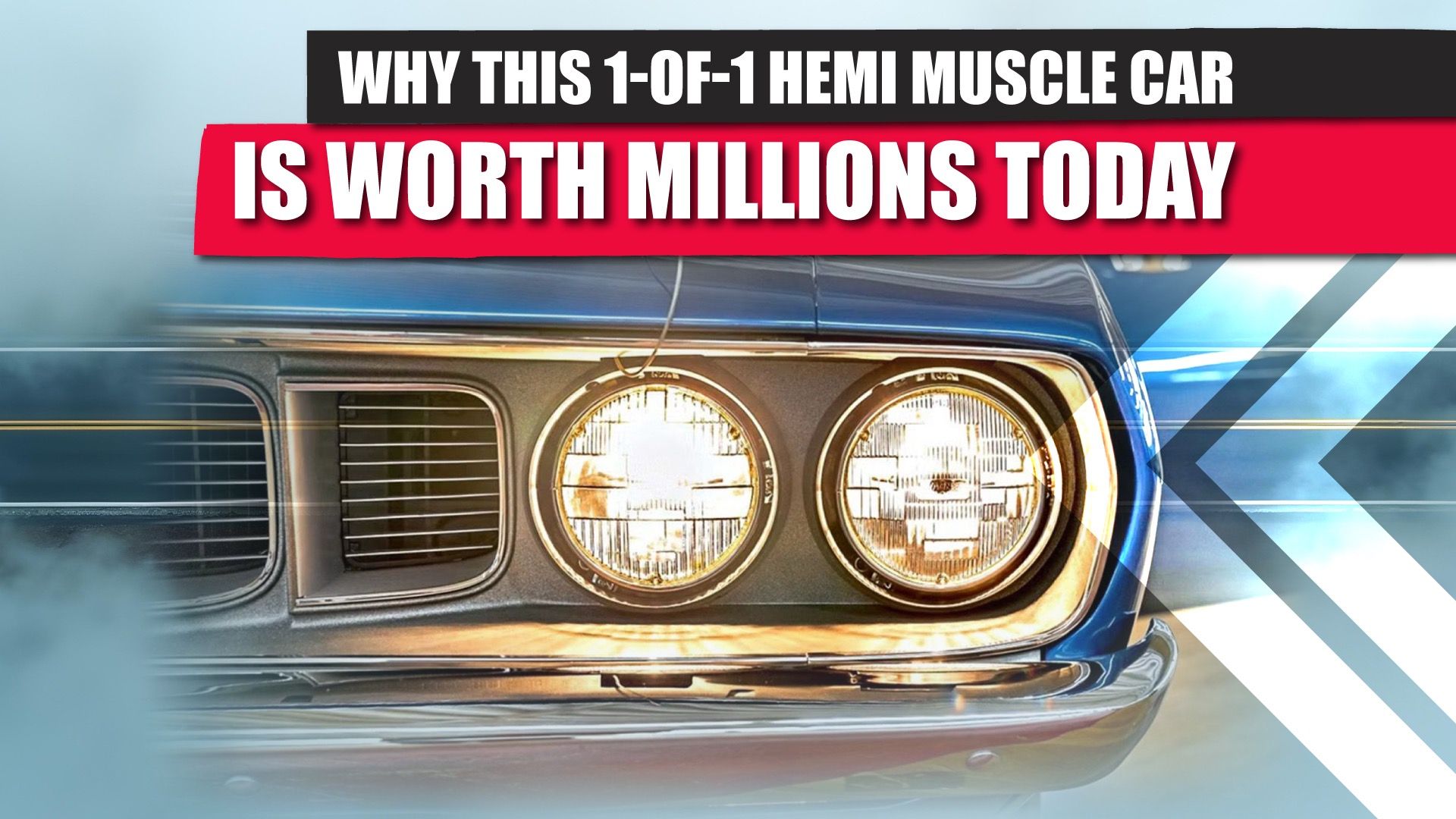Why This Rare 1-Of-1 HEMI Muscle Car Commands Millions

The Record-Breaking 1971 Plymouth HEMI 'Cuda Convertible
In June 2014, during an auction in Seattle, the atmosphere was charged with anticipation. Mecum Auctions had drawn a crowd of seasoned collectors and enthusiasts, all eager to witness the sale of a rare and powerful machine. As the bidding crossed into the seven-figure range, the room fell silent. This wasn’t just another high-value car—it was a moment that would redefine how muscle cars were valued.
When the hammer finally dropped at $3.5 million, the audience erupted in applause. This was more than a record; it was a statement. A 1971 Plymouth HEMI ’Cuda Convertible, equipped with a 426 HEMI V8 engine and a 4-speed manual transmission, had just become the most expensive HEMI-powered car ever sold at public auction. But what made this particular car so valuable?
A One-of-a-Kind Muscle Car
This specific HEMI ’Cuda was not just rare—it was the only one of its kind. Built in 1971, it came from the factory in B5 Blue with a matching blue interior. It was the sole example of a 4-speed manual convertible in that color combination. Only three of the 11 HEMI ’Cuda convertibles built that year were ordered with a 4-speed manual, and among those, only one was finished in B5 Blue.
The significance of this car lies in its uniqueness. It combined the rarest drivetrain with a color scheme that few owners could afford or even request. This rare combination made it a true unicorn in the world of muscle cars. Experts consider it the most collectible HEMI muscle car in existence, proving that rarity and authenticity can drive prices to extraordinary heights.
Technical Excellence and Performance
From a technical standpoint, this HEMI ’Cuda was built for performance. It featured a 426 HEMI V8 engine, rated at 425 hp and 490 lb-ft of torque. Paired with a heavy-duty 4-speed manual transmission and a Dana 60 rear axle with a 4.10 Sure Grip differential, it was designed to deliver maximum power on the street. Despite its curb weight of over 3,800 lbs, it could complete the quarter mile in the low 13-second range at speeds exceeding 105 mph—performance that still impresses today.
By 1971, the muscle car market was in decline due to rising insurance costs, tighter emissions regulations, and increasing fuel prices. Most buyers opted for automatic transmissions, especially in convertibles. Choosing a 4-speed manual was a bold move, reserved for true enthusiasts. This decision added to the car’s exclusivity and made it an even rarer find.
A Fully Restored Masterpiece
The car that commanded $3.5 million was not just rare—it was also in pristine condition. It had been fully restored to concours standards, with every component matching the original specifications. The numbers-matching engine, transmission, and rear axle were all intact, along with verified build sheets and documentation from Mopar historians.
Every detail, from the shaker hood to the B5 Blue interior trim, was meticulously restored to match the original broadcast sheet. The drivetrain had been rebuilt to factory specifications, ensuring that the car remained as close to its original state as possible. This level of authenticity and restoration played a major role in its staggering price.
The Final Year of the HEMI ’Cuda
The 1971 model year marked the end of an era for the HEMI ’Cuda. It was the final year the 426 HEMI appeared in a production E-body Plymouth. In total, Plymouth built just 108 HEMI ’Cuda hardtops and 11 convertibles that year. Of those, only three left the factory with a 4-speed manual, and just one was in the unique blue-on-blue configuration.
By 1972, the 426 HEMI was phased out entirely, marking the end of an iconic chapter in Mopar history. The 1971 HEMI ’Cuda became an accidental rarity, a product of timing, regulation, and declining demand. This specific car, with its one-of-a-kind specs, symbolized the peak of Detroit’s golden era of muscle cars.
A Moment in Muscle Car History
The $3.5 million sale of this HEMI ’Cuda Convertible was more than a financial milestone—it was a cultural one. It highlighted the value of authenticity, rarity, and historical significance in the collector car market. It proved that a real-deal HEMI with unmatched provenance could still shock the market and set new benchmarks.
For collectors, this car represents the ultimate score—a piece of automotive history that is both rare and well-documented. For enthusiasts, it serves as a reminder that Detroit’s golden era still holds surprises. And for everyone else, it raises an intriguing question: how many other forgotten HEMI unicorns are still waiting to be discovered?